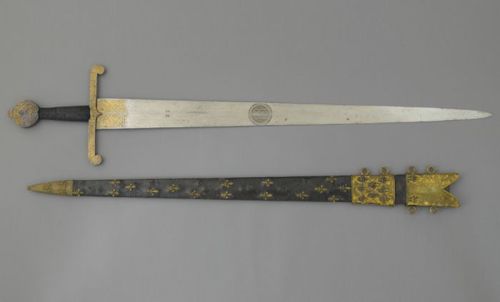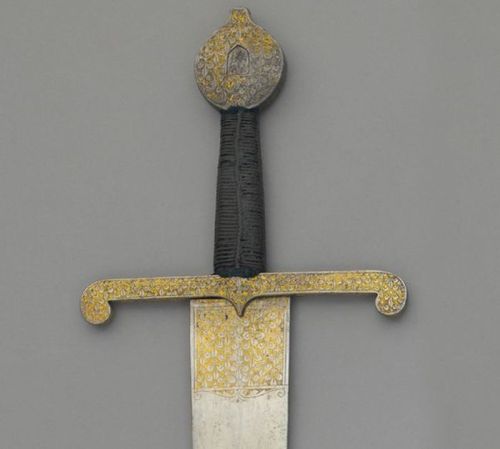art-of-swords: The Sword of the Constable Dated: circa 1475-1500 Culture: French Medium: iron, brass
art-of-swords: The Sword of the Constable Dated: circa 1475-1500 Culture: French Medium: iron, brass, wood, textile and leather Techniques: engraving and gilding This is a symbolic weapon, also named “the sword of France”, it was presented by the king to his constable at the end of a ceremony. In receiving his sword directly from the hands of the sovereign, the constable was officially invested with the supreme command of the army. Bertrand du Guesclin (1320-1380) and Anne de Montmorency (1493-1567) are among the most famous people who have been promoted in this manner. Construction wise, this weapon is based on the medieval swords. The blade though is very light and of poor quality reflecting its exclusively ceremonial character. The orientation of its ornamentation, especially of lilies carved and gilded enriching quillons, pommel and the heel of the blade and the circular cartridge in the center of it, indicates that the sword was designed to be fully revealed during the royal entries or ceremonies. The leather scabbard, miraculously preserved, is also dotted with lily gilded brass. The presence of the sword until the Revolution in Chantilly, former estate of Montmorency, suggests it might have belonged to one of two family members who benefited from the constabulary in the 16th century, especially to Anne Montmorency. Despite its archaic figure still evoking the 15th century, the weapon would be dated to the first half of the 16th century Source: Copyright © 2016 Musée de l'Armée (Dist. RMN-Grand Palais); Photo: Pascal Segrette -- source link
Tumblr Blog : art-of-swords-deactivated201705.tumblr.com
#french sword#ceremonial sword#french history#history#16th century#french monachy



